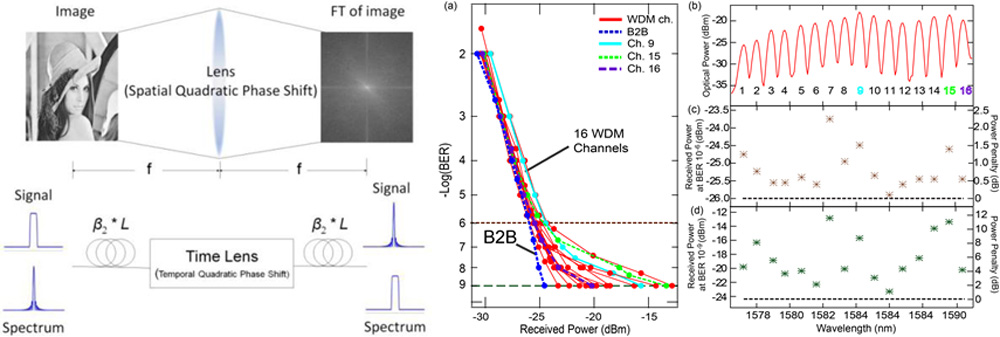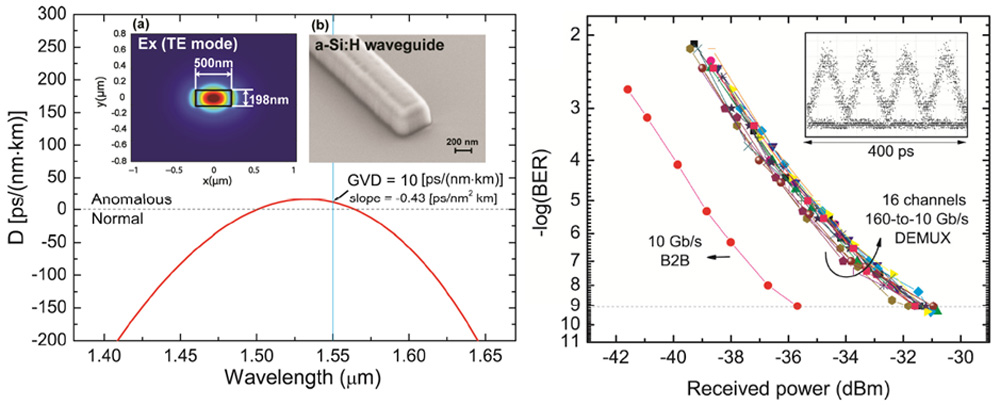Ultrahigh-Speed All-Optical Logic
In collaboration with the JHU Integrated Photonics Laboratory we are developing nonlinear optical devices that perform digital logic functions. These devices can provide extremely high speed serial logical operations well beyond the limits of electronics that can be critical in future communications and signal processing systems. For more information check out our recent publications:
K. Li, H.-F. Ting, M. A. Foster, and A. C. Foster, “High-speed all-optical NAND/AND logic gates using four-wave mixing Bragg scattering,” Opt. Lett. 41, 3320-3323 (2016). (Featured in OSA’s Spotlight on Optics)

Signal Processing Using the Space-Time Duality
We are developing signal processing architectures based on the space-time duality of electromagnetic waves. For example, we have developed a spectrally efficient and resource efficient method for all-optical serial-to-parallel and parallel-to-serial conversion using this approach. For more information check out our recent publications:
Ultrafast and Highly Nonlinear Integrated Photonic Devices
We collaborate with the JHU Integrated Photonics Laboratory to develop and validate nonlinear silicon photonic devices for future high-speed communications systems. These devices are low power and extremely compact and are capable of manipulating optical signals over extremely large bandwidths. For more information check out some of our recent publications:
High-Performance Analog Photonic Links
Analog photonic links are appealing for transmitting RF and microwave signals primarily due to the benefits offered by optical fiber, including low propagation loss, high bandwidth, low size, low cost, low dispersion, and immunity to electromagnetic interference. However, the performance of analog links is currently limited by distortion and noise arising from the optoelectronic devices in the link. We are working to develop analog photonic links that overcome these device limitations using nonlinear optical signal processing. For more information check out our recent publication:
Communications and Signal Processing using Optical Comb Sources
Optical frequency combs are light sources with precisely equidistant narrow-linewidth tones in the spectral domain. Such sources are of great interest for optical frequency metrology and optical atomic clocks. However, the unique properties of these sources also provide numerous benefits for future optical communications and optical signal processing systems. We are working to develop new sources of optical frequency combs and demonstrate their application in practical optical communications and signal processing architectures. For more information check out our recent publications:




